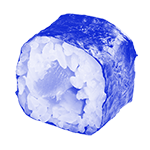
Algae Museum
Public Opinion, Biomass, Recycle, Building, Technology, Culture, Mosaic
From left to right: Meguro Parasitological museum, Shitamachi Museum, Tokyo Sewerage Museum “Rainbow”, The Criminal Materials Museum, Ghibli Museum, Tobacco and Salt Museum, Shin-Yokohama Raumen Museum and finally Algae Museum outline the quaint “museumophilia” of Tokyo. The indefinite city, whose territorial stretch defines the contemporary Metropolis, is as indefinite in its peculiar and specific knowledge shared through its museums. The hybrid nature of Tokyo, is recalled with great care in the museums. One could argue that looking at Tokyo through its museum is as fundamental as to unravel Paris through the same scope. While the latter reveals its magnificent classical spirit, the former opens up a jazzy superimposition of elements that only in their layered entirety make sense. In this laboratory-like symphony, Tokyo establishes hybridity as its only guiding principle. Precisely in this intersection, The Algae Museum takes its ultimate form as a hybrid of nature and culture and as a radical heterogeneous manifestation of Tokyo’s plurality.
Microalgae accommodates heterogeneity from its cellular composition to its usages, which range from organic matters used as a fuel, to biomass, pollution control, bacterial growth medium, food, wastewater treatment 1 and more recently to its utilization as a jet fuel.2 In a dream machine such as Tokyo, microalgae becomes an agent of simulation - a hybrid that impregnates multiple systems. In the shelfs of the museum and in its isolated labs, algae are adhered. Their aesthetics match not only the modern ideals of functionality but also the hyper-demand outcomes of contemporary society. The phychology of aesthetics is thus born, as a paradigmatic change on the appreciation of beauty. In the place where urban reality and fiction form platonic wholeness, and in the age of post-anthropocentrism, Tokyo becomes unconditionally devoted to microalgal compositions.
1. Grow Algae & Change the World, https://web-japan.org/trends/11_tech-life/tec131125.html (Accessed March 12, 2020).
2. Fueling Jet Aircraft with Microalgae: Growing Biofuel without farmlands, https://www.japan.go.jp/technology/innovation/fuelingjet.html (Accessed March 12, 2020).
Public Opinion, Biomass, Recycle, Building, Technology, Culture, Mosaic
From left to right: Meguro Parasitological museum, Shitamachi Museum, Tokyo Sewerage Museum “Rainbow”, The Criminal Materials Museum, Ghibli Museum, Tobacco and Salt Museum, Shin-Yokohama Raumen Museum and finally Algae Museum outline the quaint “museumophilia” of Tokyo. The indefinite city, whose territorial stretch defines the contemporary Metropolis, is as indefinite in its peculiar and specific knowledge shared through its museums. The hybrid nature of Tokyo, is recalled with great care in the museums. One could argue that looking at Tokyo through its museum is as fundamental as to unravel Paris through the same scope. While the latter reveals its magnificent classical spirit, the former opens up a jazzy superimposition of elements that only in their layered entirety make sense. In this laboratory-like symphony, Tokyo establishes hybridity as its only guiding principle. Precisely in this intersection, The Algae Museum takes its ultimate form as a hybrid of nature and culture and as a radical heterogeneous manifestation of Tokyo’s plurality.
Microalgae accommodates heterogeneity from its cellular composition to its usages, which range from organic matters used as a fuel, to biomass, pollution control, bacterial growth medium, food, wastewater treatment 1 and more recently to its utilization as a jet fuel.2 In a dream machine such as Tokyo, microalgae becomes an agent of simulation - a hybrid that impregnates multiple systems. In the shelfs of the museum and in its isolated labs, algae are adhered. Their aesthetics match not only the modern ideals of functionality but also the hyper-demand outcomes of contemporary society. The phychology of aesthetics is thus born, as a paradigmatic change on the appreciation of beauty. In the place where urban reality and fiction form platonic wholeness, and in the age of post-anthropocentrism, Tokyo becomes unconditionally devoted to microalgal compositions.
1. Grow Algae & Change the World, https://web-japan.org/trends/11_tech-life/tec131125.html (Accessed March 12, 2020).
2. Fueling Jet Aircraft with Microalgae: Growing Biofuel without farmlands, https://www.japan.go.jp/technology/innovation/fuelingjet.html (Accessed March 12, 2020).


